10 Most Fluffy And Adorable Chicken Breeds
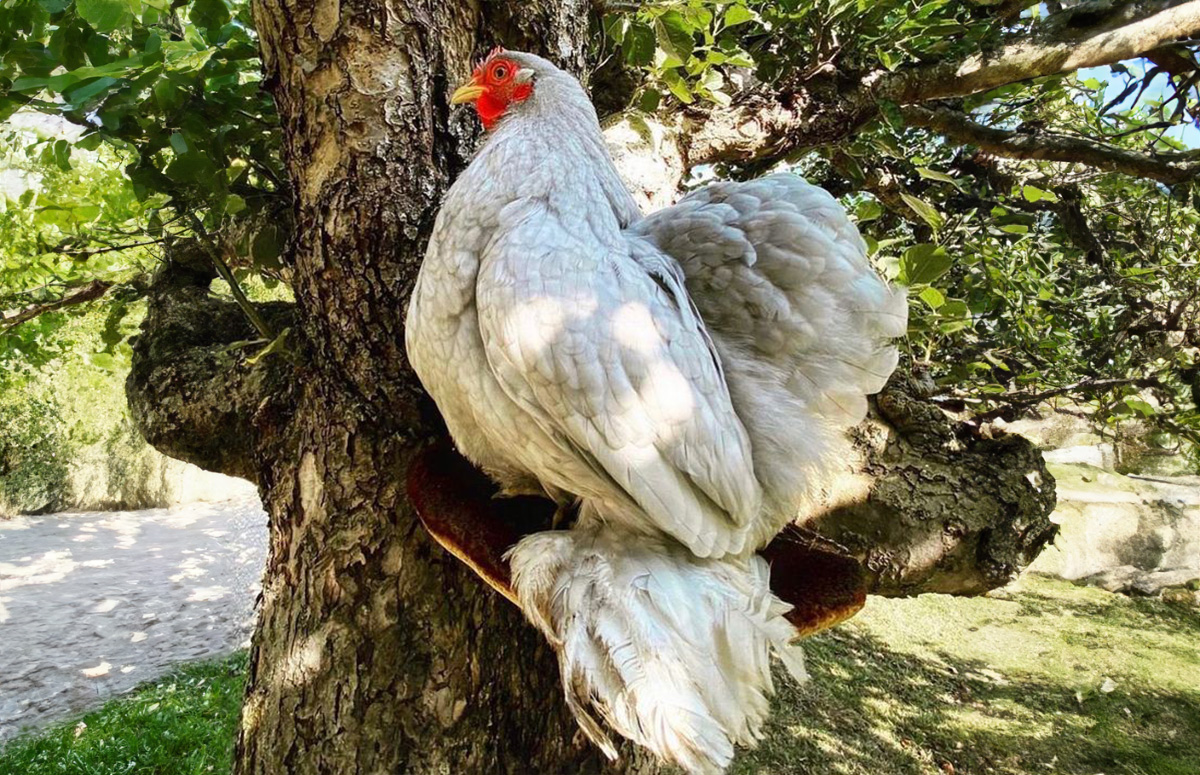
With feathers fluffier than your favorite pillow, these adorable and cuddly breeds bring charm to any backyard flock. Our top 10 irresistible breeds will steal your heart and maybe even deserve a spot on your couch. Get ready to start your own cuddly flock!
Let’s take a closer look at some of the most famous chicken breeds known for their fluffiness and discuss their pros and cons. All breeds on this list are kid-friendly and, so, an excellent addition to a family farm.
Our Top 10 fluffy chicken breeds:
- Silkies
- Frizzle chicken
- Pekin Bantam
- Cochin
- Polish
- Orpington
- Faverolles
- Belgian Bearded d’Uccle
- Brahma
- Pavlovskaya
1. Silkies
Does this breed need any introduction? Silkies are becoming a famous chicken breed, known for their fluffy appearance and sweet nature. They are our number one fluffy, child-friendly chicken breeds because they don’t only look cute but can be kept as pet chickens.
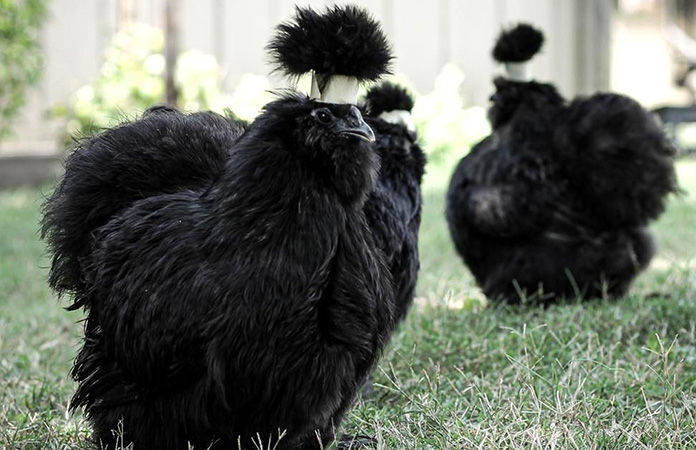
Silkies love human attention and want to be cuddled and picked up. You can even teach them how to do tricks! Some people teach Silkies how to wear chicken diapers to keep them inside the house. But always remember, Silkies are animals that need outside space.
Pros:
- Look: Silkies look amazing with their fluffy feathers, five toes and blue earlobes.
- Personality: They are incredibly sweet and docile, never aggressive, even Silkie Roosters are calm. You can keep them as pet chickens if you like.
- Beginner-friendly: Silkies don’t need special care, although they don’t like wet environments. Besides that, anybody can keep Silkies; it’s a very beginner-friendly breed.
Cons:
- Not suited for all weather types: Their fluffy plumage does not like wet or cold weather, as it’s not waterproof. They also don’t like muddy and wet environments. Keep their run dry.
- Are easily bullied or low in the pecking order. Don’t keep Silkies with dominant breeds.
- Easy target to predators: They have bad eyesight due to the feathers covering their eyes, making them vulnerable to predators. Secure the run from predators.
- Often broody: Silkies are the broodiest chicken breed in the world.
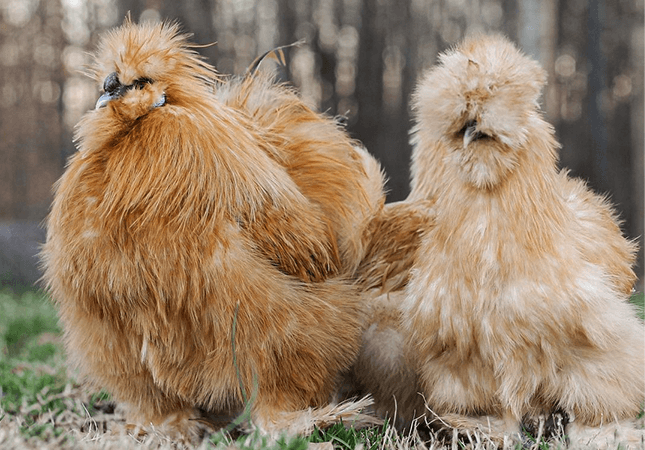
Egg Production
Silkies lay up to three eggs per week, that’s around 160 eggs yearly. However, because of their broodiness, they often stop egg production. Due to this broodiness, Silkies will only lay up to 100 eggs yearly on average.
If you’re not planning on hatching eggs, this broodiness can be annoying, as Silkies can be quite stubborn when sitting on eggs. They refuse to leave the nest and even forget to eat or drink.
2. Frizzle Chicken
Frizzle chickens are conquering the world because of their fluffy look and cuteness. While considered an official breed in some countries, they are mostly seen as a variety due to their unique feathering, resulting from selective breeding with chickens that carry the frizzle gene.
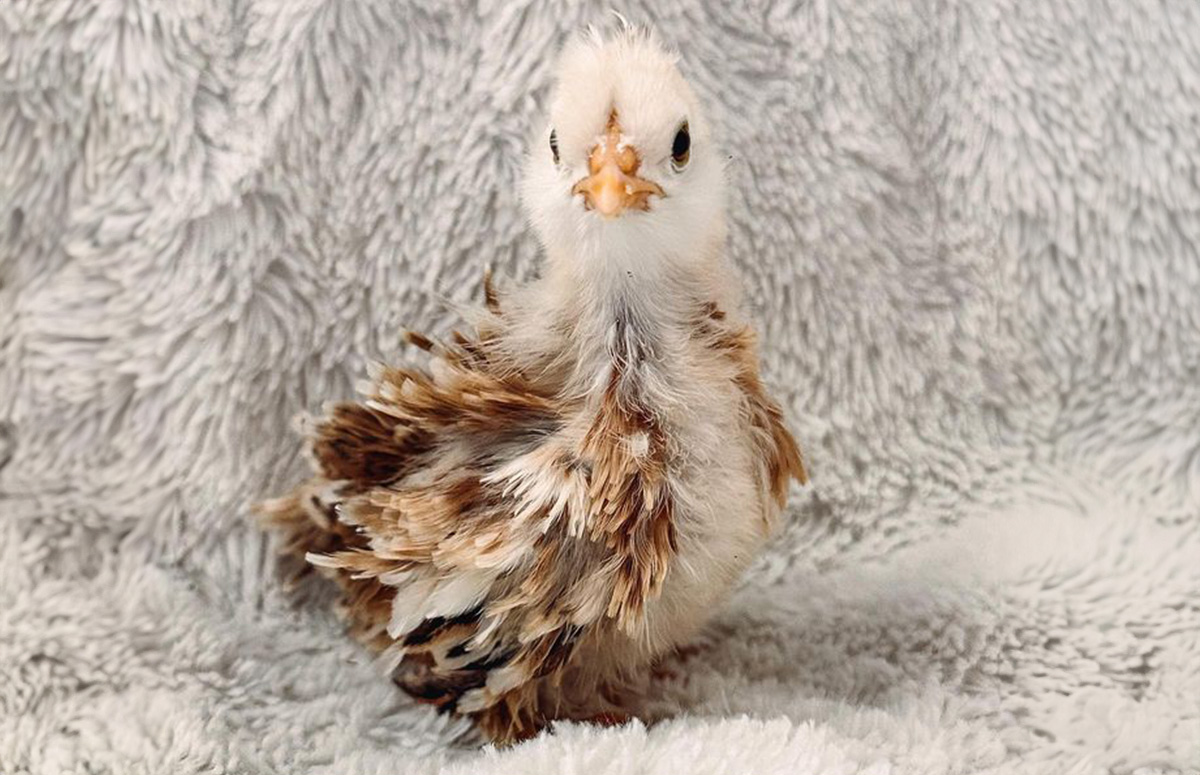
The term ‘frizzle’ refers to their unique feathering caused by breeding with chickens with the frizzle gene. This makes them stand out among other breeds. Frizzle chickens are mostly Silkies, Cochins, or Polish chickens. But in theory, any other breed is possible.
Pros:
- Excellent pet chickens: Frizzle chickens are cuddly, friendly, and a great addition to your backyard flock.
- Social media superstar: This unique-looking chicken will help you succeed in setting up a successful chicken social media account.
- Docile, not flighty: Due to their feathering, they can not fly. They’re fine in confinement and will not try to escape the run by flapping over the fence.
Cons:
- Don’t like wet and muddy weather: Their fluffy plumage is not waterproof. They also don’t like muddy and wet environments. Keep their run dry.
- Often broody. Depending on the Frizzle mix, they can be quite broody.
- Not the best egg-layers: Frizzle chickens will lay three to four eggs per week, depending on the mix.
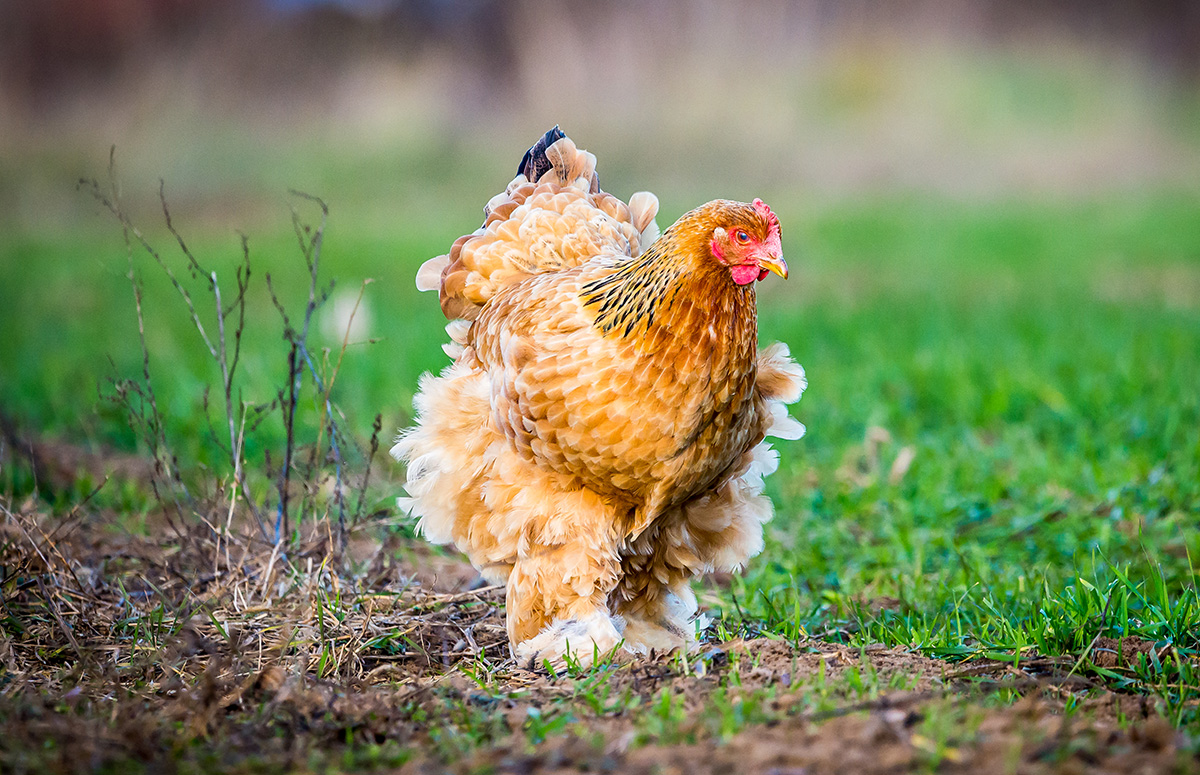
Egg Production
Most Frizzle chickens are a Cochin, Polish, or Silkie mix; all these breeds are ok to decent egg layers. Keeping a Frizzle chicken will ensure you at least three eggs per week per hen.
The number of eggs you can expect from Frizzle chickens:
- Silkie mix: 3 eggs per week, but because of their broodiness, you’ll get around 100-120 eggs yearly.
- Cochin mix: 3 to 4 eggs per week. They are good egg layers, but they can be broody birds, and all chickens stop producing eggs when sitting.
- Polish mix: Up to 4 eggs per week. Polish chickens are rarely broody but decrease egg production during winter months.
3. Pekin Bantam
The Pekin Bantam is a small chicken breed also known as the Cochin Bantam. Unlike the name suggests, the Cochin Bantam has no connections with the Cochin chicken. They are two separate chicken breeds with a fluffy look.
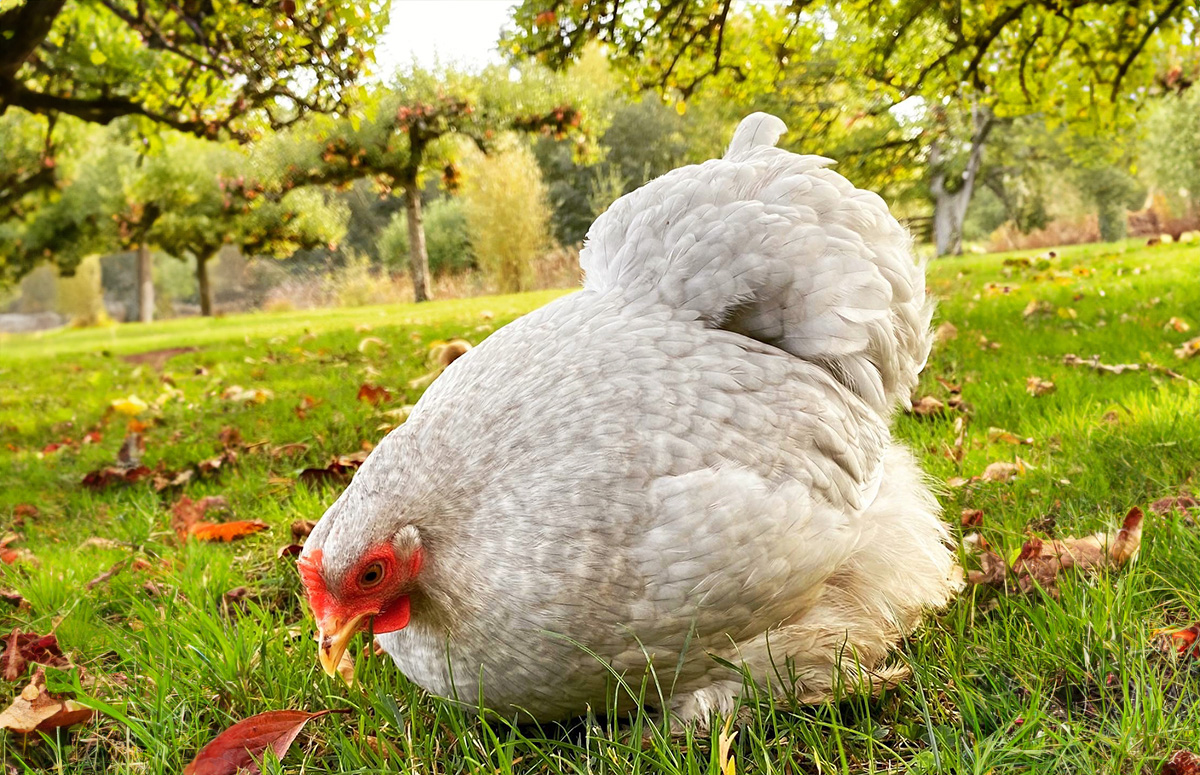
They’re easy to handle and low in maintenance, which makes them an excellent beginner-friendly breed. Their fluffiness and small size make them very popular with children.
Pekin Bantams are cold and heat-hardy and can be kept in any climate. But remember, any chicken needs extra care during extreme weather conditions.
Pros:
- Cold and heat hardy: Can be kept in any climate.
- Beginner-friendly: They are low in maintenance and don’t need much additional care besides food, water, and shelter.
- Small and fluffy: They can be excellent pet chickens. They love to be picked up and are great with children.
Cons:
- Not best egg-layers: Bantam Cochins or Pekins lay up to 150 eggs yearly.
- Broody: they are known to be broody birds, which can be annoying because they stop egg production during broodiness.
- Prone to obesity: Don’t feed Cochin Bantams too many treats.
- Feathered feet don’t like wet environments. Chickens with heavily feathered feet must be checked regularly to prevent problems like fungi and bumblefoot.
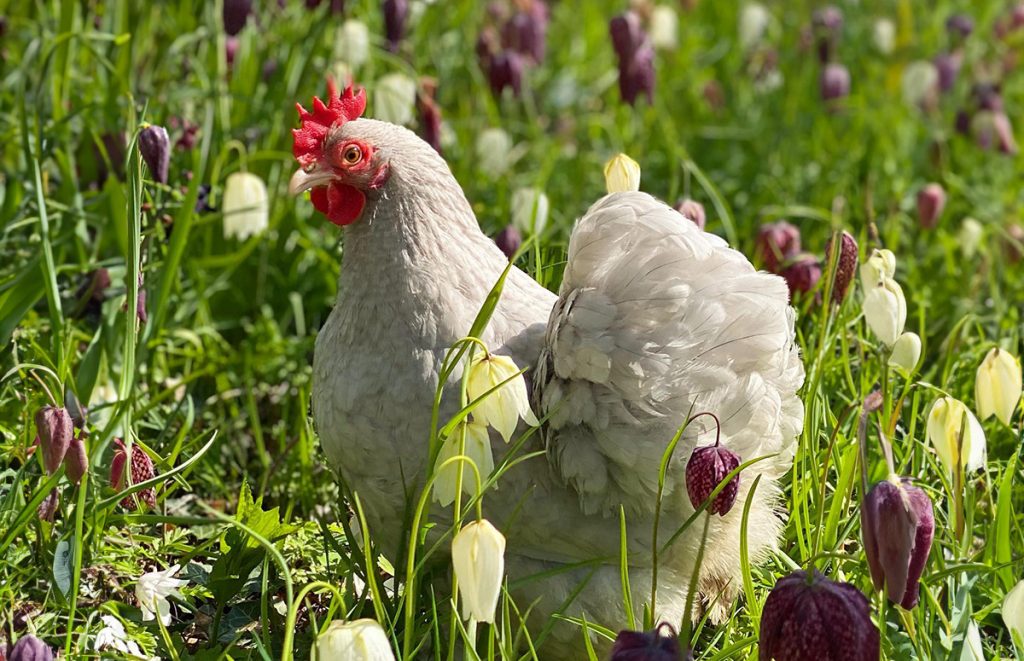
Egg Production
Cochin Bantams are ok egg layers, laying up to 110 small brown eggs annually. They are not the worst egg layers, but definitely not the best eighter. There are better options if you are looking for a fluffy chicken breed that provides you with plenty of eggs.
Hens often go broody, which is something to remember if you’re not planning on hatching eggs.
4. Cochin
Cochins are among the world’s heaviest and largest chicken breeds, so it may seem strange to put them on our ‘kid-friendly list’. But they are an incredibly docile and family-friendly breed, and because of their fluffy appearance, quite popular on social media.
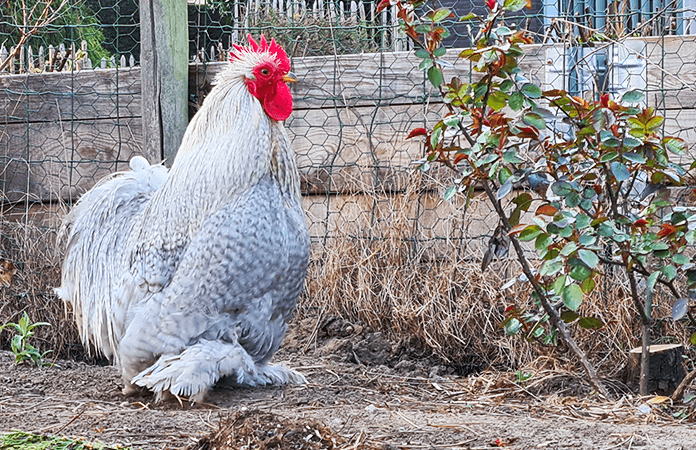
Cochins are easily recognizable due to their excessive foot feathering and dense plumage, giving them their fluffy appearance. They can be easily handled and picked up, they love human attention.
Pros:
- Very cold-hardy: The dense feathering all over their body makes them very cold-hardy, and they stand extreme weather well
- Ornamental chicken breed: Specially bred to participate in competitions, beautiful feathering.
- Docile: Because of their weight, they are docile and will not fly or escape the run.
Cons:
- Prone to obesity: Due to their build, Cochins are prone to obesity. They’re also quite lazy and not the best foragers. Don’t feed them to many treats.
- Extremely broody: Together with Silkies, Cochins are the most broodiest chicken breed.
- Not fond of muddy enclosures: Because of the feet feathering, they aren’t fond of wet environments.
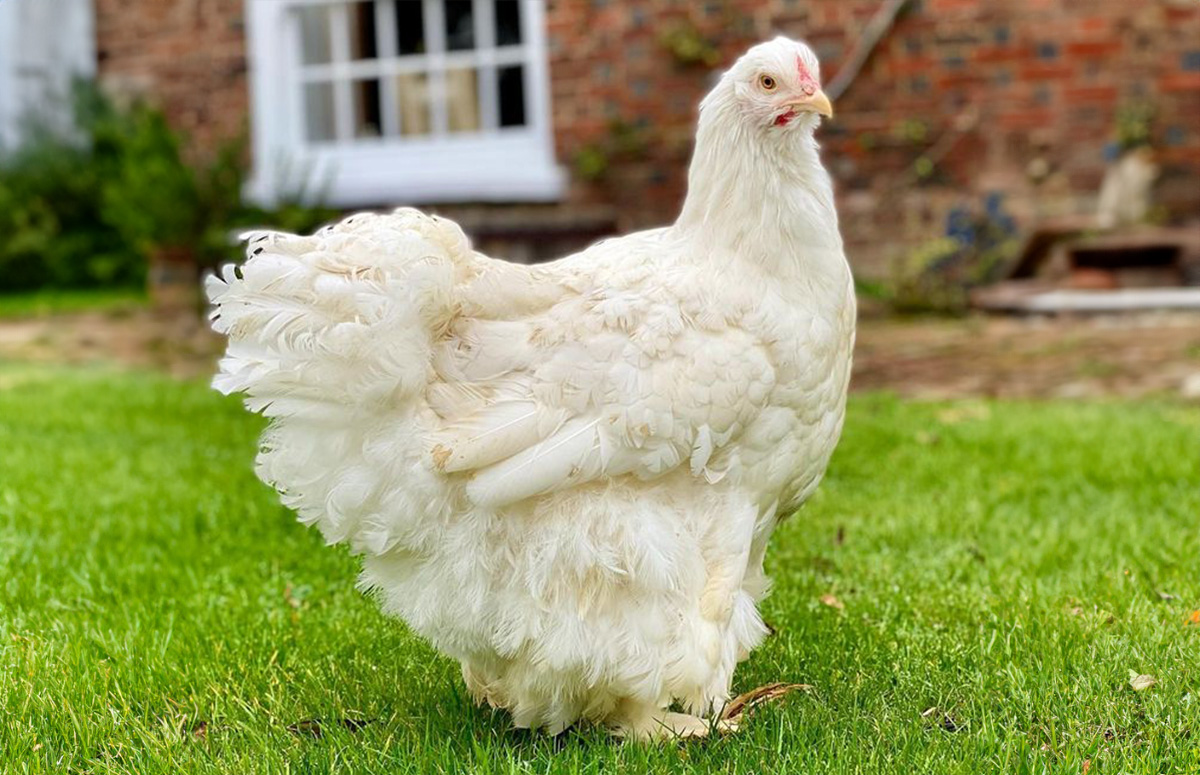
Egg Production
Cochin chickens are moderate layers, not the best nor the worst. They typically lay around 150 eggs per year, about 2 to 3 eggs per week. Their eggs are large and come in shades of light brown to brown.
Despite their moderate egg production, Cochin chickens are known for their cold hardiness, allowing them to continue laying throughout the winter, even in temperatures below freezing. However, it’s important to note that egg production may decrease during this time of year.
5. Polish
Polish chickens, or Padua chickens, are an absolute favorite among families with children. This chicken breed has an iconic look, with its distinctive crest of upward-pointing feathers resembling a pom-pom.
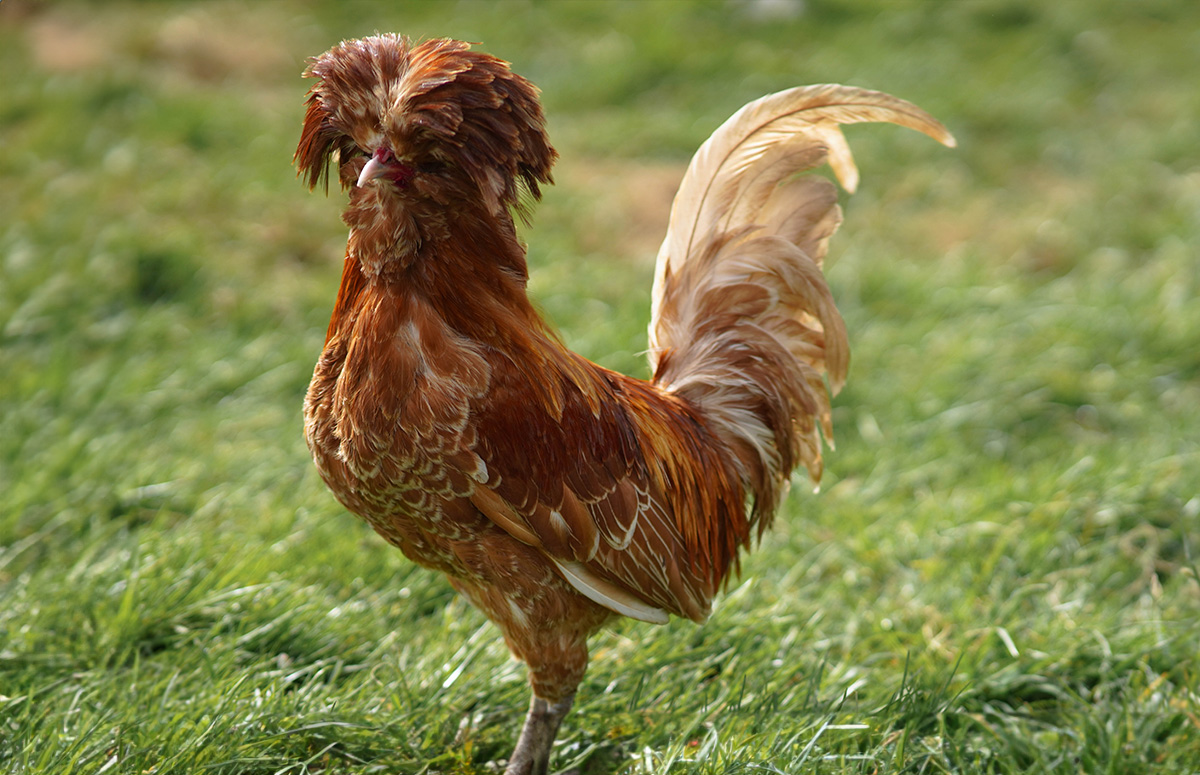
They don’t only look cute and fluffy; they make excellent pet chickens. Polish chickens love the company of humans and are a great choice if you have small children. They can, however, be flighty. It’s not uncommon to find Polish chickens roosting in a tree instead of inside the coop.
Because of their crest, Polish can’t see very well. They are, therefore, skittish and scared easily, especially when you silently approach them.
Pros:
- Friendly & good-looking: Polish chickens are great pet chickens because of their friendly nature. They also have an iconic look with their pom-pom head.
- Not broody: This breed is not known to go broody easily, which is an advantage if you’re not planning on hatching eggs.
- Beginner-Friendly: Polish chickens may look like they need much care but don’t. It’s a beginner-friendly breed.
Cons:
- Not very confident: They can be bullied when placed with dominant breeds.
- Can’t see well: Because of their crest, they can’t see very well. This makes them skittish. Always let them know you are coming by making noise when approaching.
- Not-cold hardy: Most Polish stop egg production during winter months.
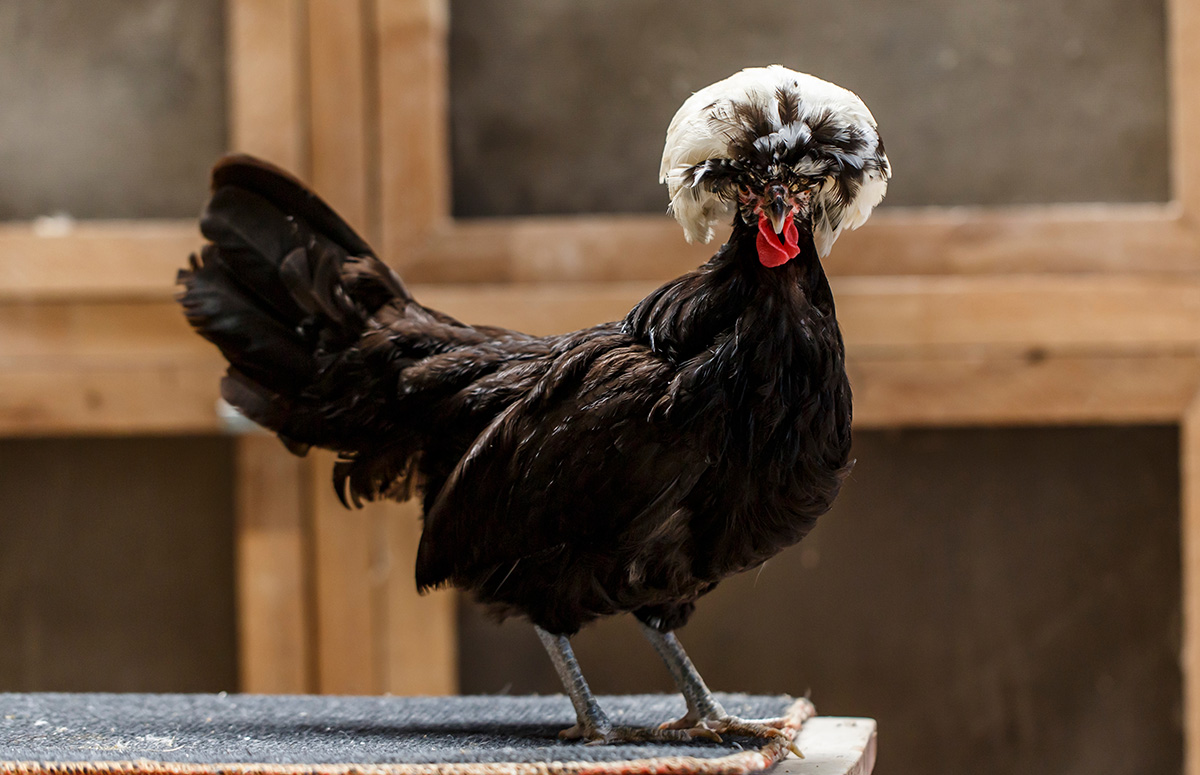
Egg Production
Polish are not the most productive chickens, but they still lay a decent amount of eggs yearly. They don’t lay during winter and resume their egg production in late spring. During warmer months, Polish chickens bring around 150 eggs per year to the table, that’s three to four per week.
6. Orpington
Orpington chickens are a large and fluffy chicken breed. They look massive, but their extremely friendly personality makes them great family-friendly chicken.
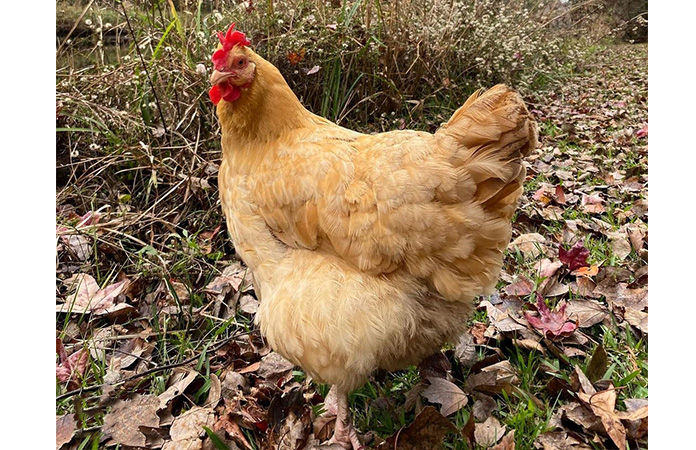
Orpingtons come in different color varieties, like white and lavender, but ‘buff’ is the most popular one. Buff Orpingtons have a lovely golden brown color, which gets deeper after every molt. Their easy-going character makes them the ideal breed for beginners or chicken keepers with children.
Because of their body structure and weight, Orpingtons can not jump very high. This makes them docile but more susceptible to predators, as they aren’t good at escaping their attackers.
Pros:
- Family-friendly: Orpingtons are known as ‘gentle giants’. They are extremely friendly and sweet, making them a perfect breed for families.
- Good egg layer: They lay up to five large eggs per week.
- Cold-hardy: Can stand cold weather very well, because of their fluffy feathering. They won’t stop egg production during winter.
Cons:
- Not heat-hardy: Orpingtons are not the best breed to keep in tropical climates as they don’t like hot temperatures.
- Heavy and large: Need more space, and a secured run as they can not escape predators well.
- Broody: Orpington chickens easily go broody, which can be annoying as they stop egg production during broodiness.
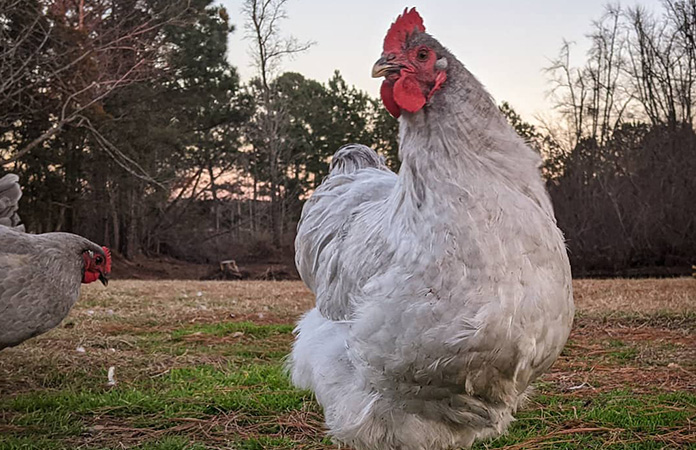
Egg Production
A young Orpington hen reaches adulthood at the age of 20 weeks and will start laying around that time. They are excellent egg layers and lay approximately five large light brown eggs per week. That’s more than 250 eggs per year!
7. Faverolles
Faverolles chickens are a large French chicken breed. They have large bodies, fluffy beards, and muffs and are heavily feathered from head to toe. It’s the only chicken breed worldwide with ‘salmon’ as a color variety. Salmon Faverolles are the most popular color because of their creamy light brown feathers.
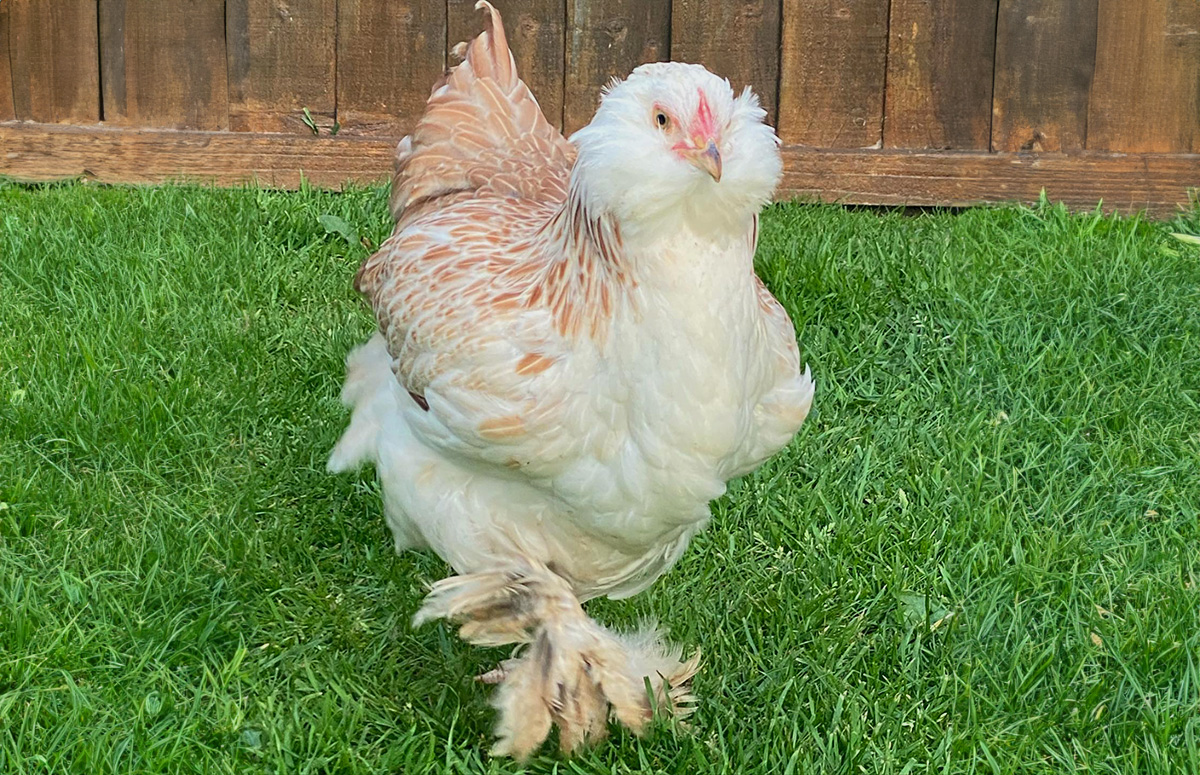
The breed is mainly kept for its show qualities and to participate in exhibitions, but they’re also suited as backyard chickens for families. Faverolles are extremely friendly chickens. The breed is not aggressive or assertive; even the roosters are known to be calm.
Pros:
- Personality: Faverolles chickens are docile and sociable chickens. They are friendly and sweet and get along with humans and other chickens.
- Egg production: They are good egg layers, and their egg color is somewhere between light brown and pink.
- Fluffy look: Their muffs make them look even fluffier than other large, heavily feathered breeds.
- Cold and heat-hardy: Can withstand colder and warmer temperatures, but remember that all chickens need extra care during extreme weather.
Cons:
- Easy target for bullies: their gentle nature makes them an easy target for dominant breeds.
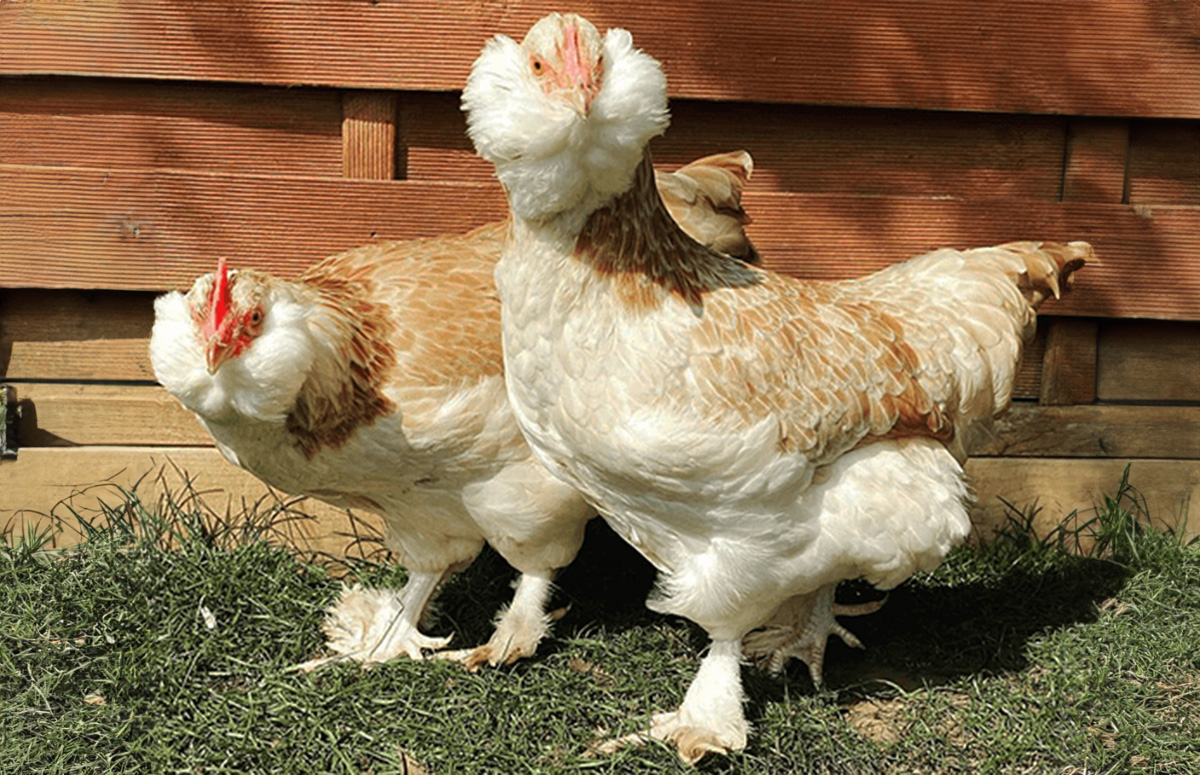
Egg Production
Faverolles chickens are good egg layers and will bring you plenty of eggs in the morning. They lay around three to four large eggs weekly. They will continue to lay during winter, but their egg production may slow down.
Faverolles are genetically predisposed to produce pink blooms, the protective cover around the egg. This makes their brown eggs appear pink. However, most Faverolles lay ‘normal’ brown eggs.
8. Belgian Bearded d’Uccle
The Belgian Bearded d’Uccle chicken is a small true bantam breed originating in Belgium and typically weighing around 1.5 to 2 pounds (650 grams to 750 grams). They have distinctive beards and muffs, with tufts of feathers on their cheeks. They look charming, and kids will love their appearance.
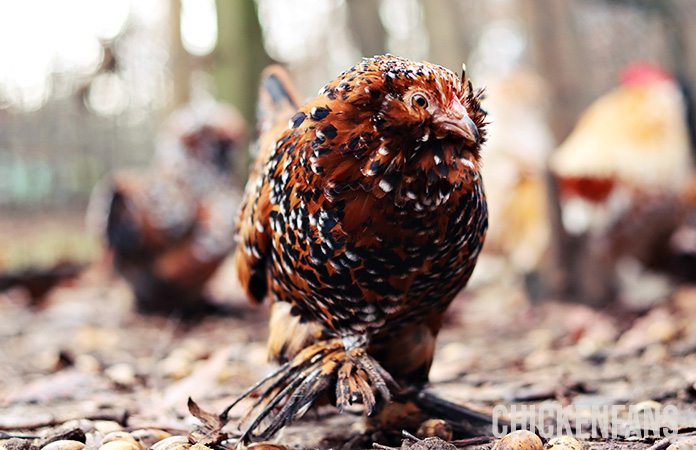
The breed comes in various colors, with the most popular being Millefleur, meaning a thousand flowers. The Millefleur pattern is characterized by a mix of black, blue, and brown speckles on a white background.
Today, the Belgian Bearded d’Uccle is considered rare, but it continues to be popular among those who appreciate its unique looks and friendly personality.
Pros:
- Less common breed: Choosing a d’Uccle chicken adds a unique and one-of-a-kind chicken breed to your flock. Although less common, they’re still quite easy to find.
- Docile and sweet: They are generally calm and gentle, making them a good choice for families with children. They are often curious and enjoy human interaction.
- Don’t need much space: They are well-suited to life in the backyard and can be kept in a coop or small barn.
Cons:
- Not the best egg layers: There are better breeds to choose if you’re looking for a decent egg layer.
- Don’t like muddy environments: Keeping them in a dry run is necessary because of their feathered feet.
- Harder to find: Although plenty of hatcheries sell this breed, finding a quality Belgian d’Uccle chicken is not always easy.
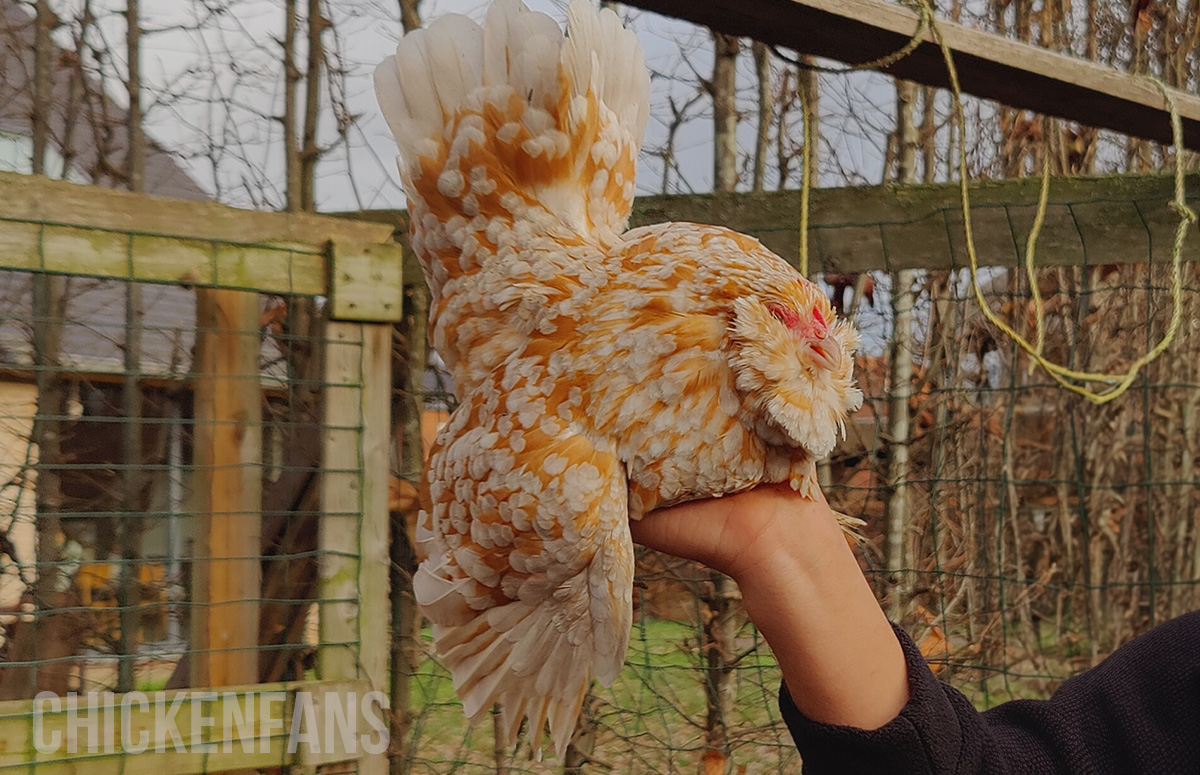
Egg Production
As most bantam breeds, Belgian d’Uccle chickens are not the best egg-layer. They will lay up to 3 eggs weekly, all white to cream-colored.
The breed does get broody occasionally, so this will stop egg production on a regular base. Overall, you can expect around 100 eggs yearly from a Belgian d’Uccle, like Silkies.
9. Brahma
Another giant chicken breed that is family-friendly is the Brahma chicken. They may look frightening and impressive, but they are sweet chickens, very friendly toward humans, and very protective of other chickens. They’re a great addition to any backyard flock.
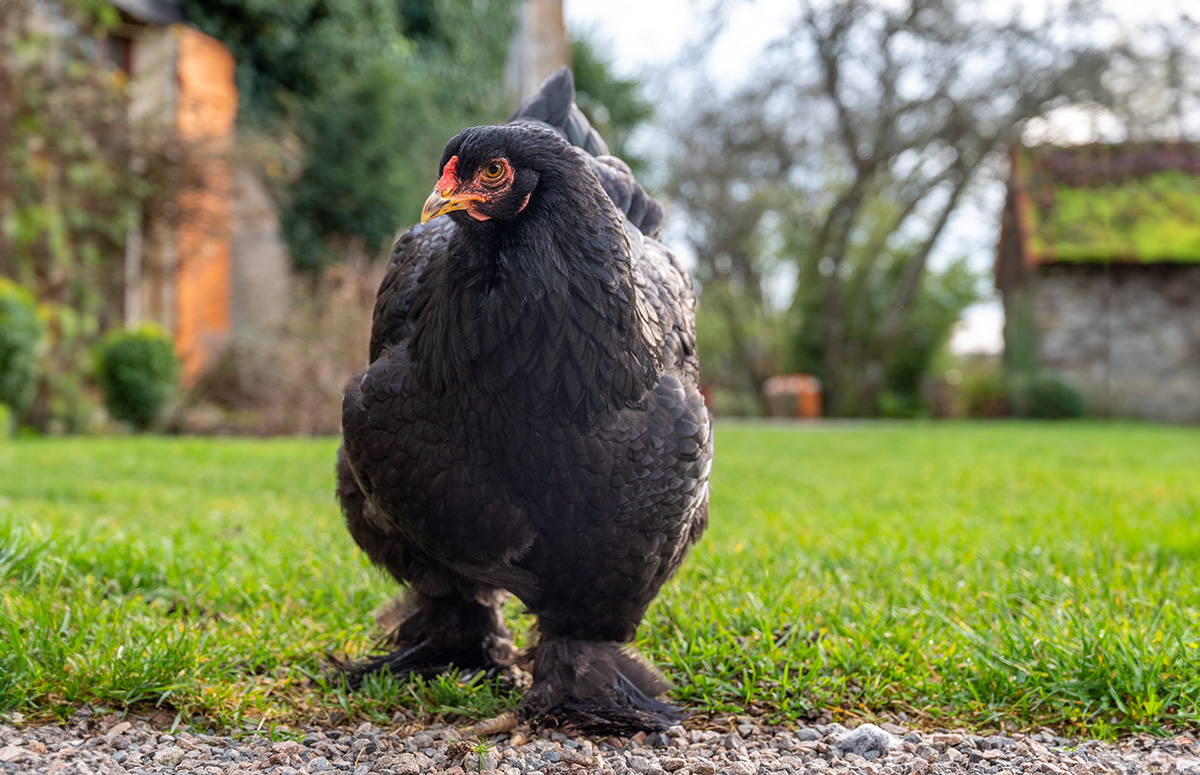
Brahmas have big wide heads, a pea comb, and what looks like overhanging eyebrows. With their 30 inches and evil look, they look massive. With their large body, dense feathering all over their body, and small pea combs, they are built to survive in the cold.
Brahmas lay eggs during wintertime and are an excellent choice to ensure a steady flow of eggs throughout the year.
Pros:
- Sweet, docile and protective: Brahams are the protectors of the flock. They are mostly on top of the pecking order and take their protective task very seriously.
- Good egg-layers: Brahma hens will bring you plenty of eggs each week.
- Cold-hardy: Can withstand harsh weather without any problems and keep on laying during winter.
Cons:
- Heavy and look scary: Although Brahmas are sweet and friendly chickens, they may look a bit too scary for some children. They’re also too heavy to be picked up as lap chickens.
- Broody: Brahma hens tend to go broody easily.
- Not heat-hardy: Don’t like hot weather; best not to keep them when living in a warm environment.
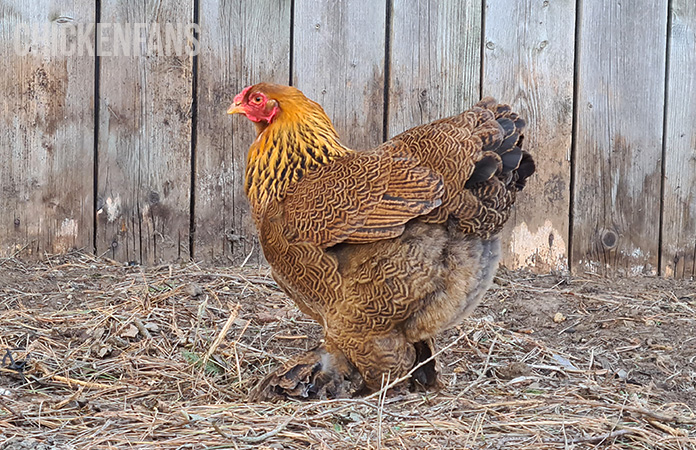
Egg Production
Most Brahma chickens sold nowadays will lay around 200-250 eggs yearly. All eggs are large to extra-large in size and brown in color. Due to their cold hardiness, Brahma chickens will keep on laying during winter months.
They can get broody occasionally. Keep in mind that broody chickens temporarily stop egg production.
10. Pavlovskaya
If you haven’t heard from this breed before, don’t worry. The Pavlovskaya chicken is pretty rare and unknown. It’s a crested breed, originating in Russia, with outstanding looks and extremely cold hardiness.
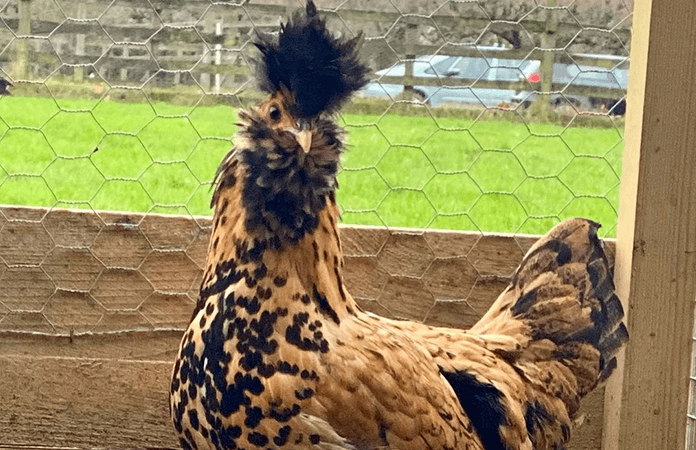
They have a distinctive tuft or crest of upward-pointing feathers on the head, which looks much like a Polish chicken‘s crest. The Pavlovskaya chicken is also praised for its gentle and docile nature.
The breed is known to be extremely cold-hardy. The winters in Russia can be harsh, so it adapted to these extreme temperatures. They don’t do well in warm temperatures.
Pros:
- Crested unique breed: Their looks make them stand out from other breeds, and because they are uncommon, you’ll add a unique breed to your flock.
- Cold-hardy: A hardy breed that stands cold weather very well.
- Friendly: Pavlovskaya chickens are very friendly towards humans, but also to other chickens. They are excellent pet chickens.
Cons:
- Rare: Many hatcheries sell Pavlovskaya chicks or fertilized eggs, but remember there will be a waiting list.
- Not good egg layers: The hens only lay between 60 and 90 eggs yearly. That’s two eggs per week or less. That is also why this breed is rare; there aren’t enough fertilized eggs due to their low production.
- Not heat-hardy: This is not the best breed to keep when living in a hot or tropical climate.
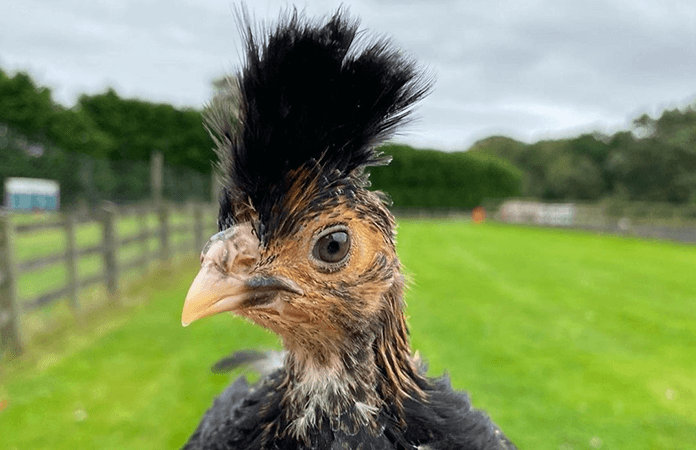
Egg Production
Pavlovskaya chickens are not good egg layers. They lay up to 60 to 90 eggs yearly, which is less than two eggs per week. They’re mainly kept as ornamental birds or for breeding purposes.
All eggs are medium-sized and vary in color from white to cream to tinted.
Why Chickens Are a Great Companion for Kids
As a parent, you know that keeping pets can be a great lesson in responsibility for children. They learn how to take care of animals and do chores. But some animals need more care than others. Dogs, cats, and rabbits require more work and are not low in maintenance.
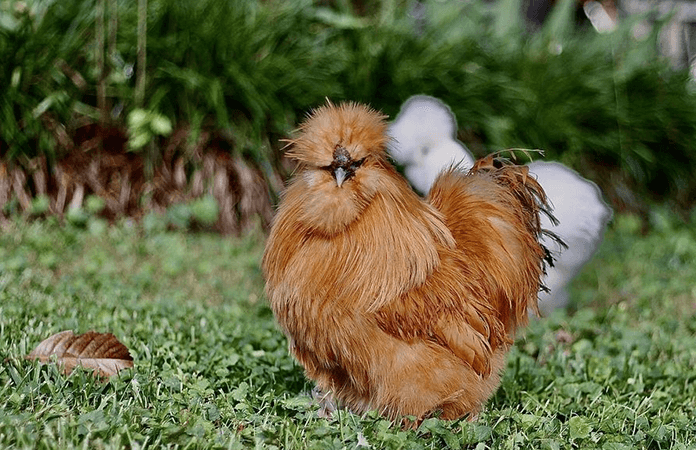
Additionally, many pets can live up to 20 years, which is a significant commitment. If you’re looking for a pet that can provide your kids with valuable lessons on caring, cleaning, and feeding but requires less extra care and have a shorter lifespan, then a pet chicken could be a great option!
Our list of fluffy chicken breeds will delight kids with their unique and adorable appearance. And the feeling is mutual – these breeds are known for being friendly towards families and make great low-maintenance pets that still provide a source of fresh eggs.
These fluffy breeds are also perfect for showing off on Instagram or TikTok; they are social media superstars.
With these chickens, it’s a win-win situation for both kids and adults!
Summary
Many chicken breeds stand out for their cute and fluffy appearance, making them especially appealing to children. Our fluffy chicken breeds are adorable and make great low-maintenance pets for families.
Keeping a pet chicken can be a valuable lesson in responsibility for kids while providing the whole family with a source of fresh eggs.
There are hundreds of chicken breeds in the world! If you want to get to know them all, rare or common, heritage or hybrid, go to our ‘All Chicken Breeds & Types Worldwide: List of 500+ Breeds‘.
Related Articles
Top 15 Brown Chicken Breeds: All Beginner-Friendly
20 Amazing Giant Chicken Breeds
10 Popular Chickens With Colored Eggs
8 Beautiful Black Chicken Breeds
Top 5 Best Egg Layers that Lay Green Eggs
10 Small Chicken Breeds that are Beginner-Friendly






















